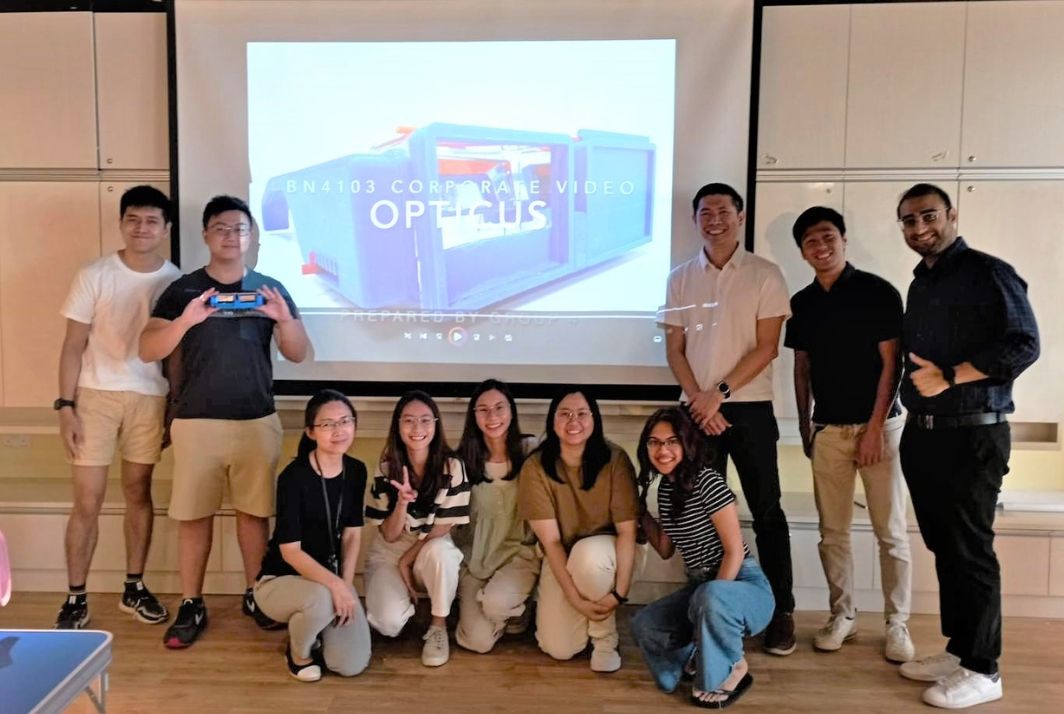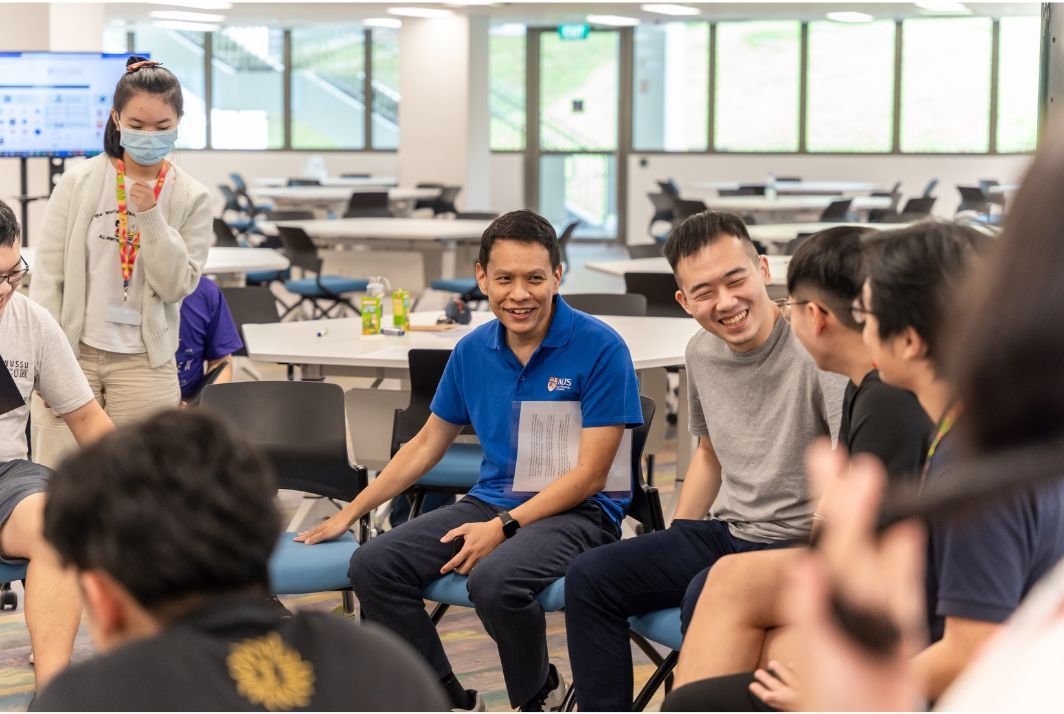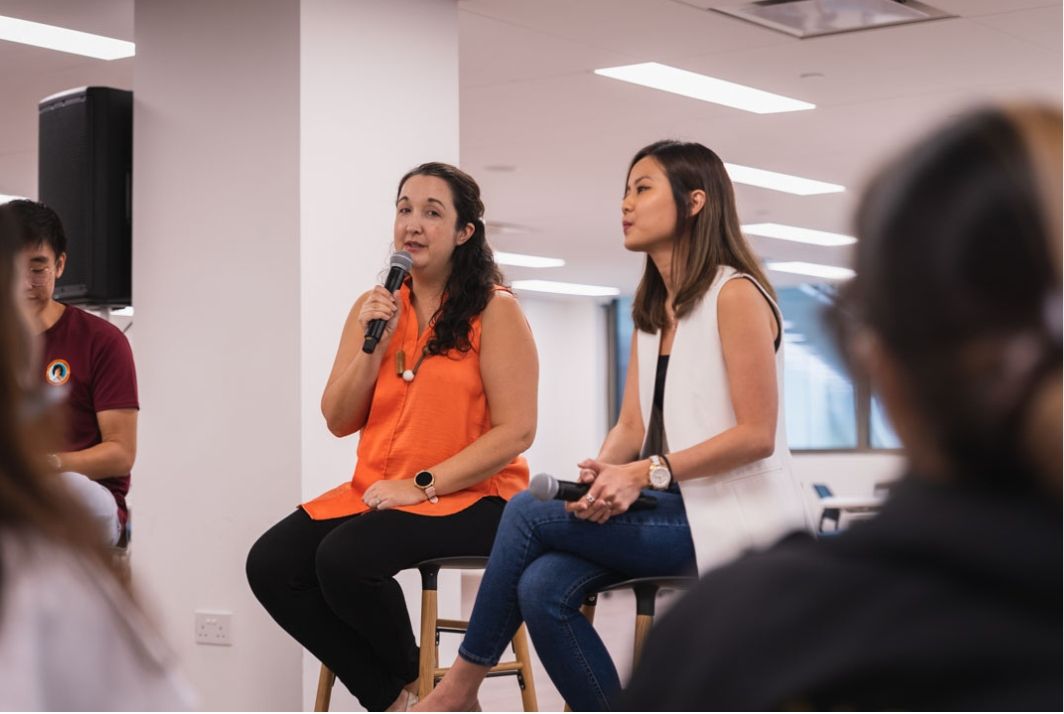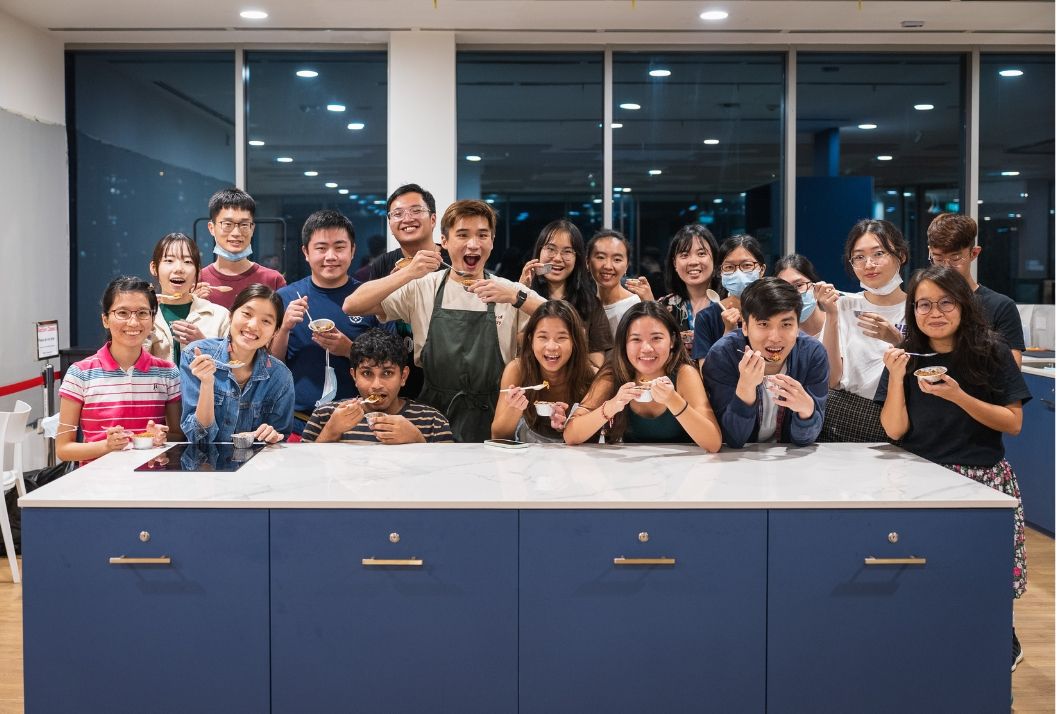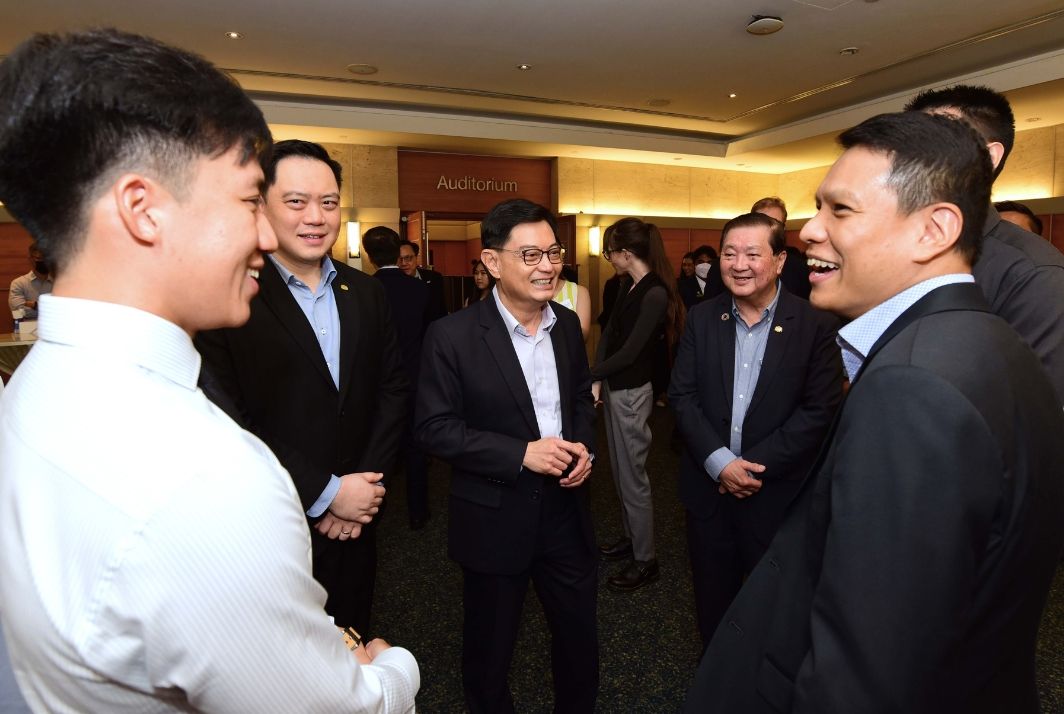A fall injury sustained by second year College of Design and Environment (CDE) undergraduate, Wong Shee Pin, during his Commando training in the Singapore Armed Forces proved life changing. The accident inflicted Shee Pin with acute cerebellitis, a rare inflammatory syndrome characterised by swelling of the brain and led him to develop Nystagmus – an involuntary, rapid and repetitive movement of the eyes that causes visual impairment.
He said: “Walking around was exceedingly challenging for me as every move I took was brand new and surprising. I had to guess and estimate if the next step I will be taking will be on a smooth or elevated ground. I have made poor judgment calls multiple times which caused me to trip or even fall.”

Such challenges faced by Shee Pin is what students enrolled in the module, “BN4103 Assistive Technology for Persons with Disability”, hope to alleviate through their assistive technology prototypes. Assistive technology devices seek to facilitate greater independence in daily activities for people with disabilities.
Students formed groups and worked together with a student with special needs (SSN) peer client to bring an assistive technology idea to life within the timespan of a semester. Through a process of needs assessment with the SSN, co-ideation and prototype development, students showcased their final product prototype to Dr James Kah, adjunct lecturer of BN4103, and SSN peer clients.
“My first impression of BN4103 was that (the proposed protypes) would not be as complex,” Shee Pin said. He had volunteered to be a peer client for BN4103 after learning about the module.
“However, upon working with the students in BN4103, it opened my eyes to the fact that students are taught to create a far more advanced prototype to assist people with disabilities. With that, I would say it is a meaningful yet purposeful module," he quipped.
A look at the creative design prototypes
Group 4 Protoype: Opticus
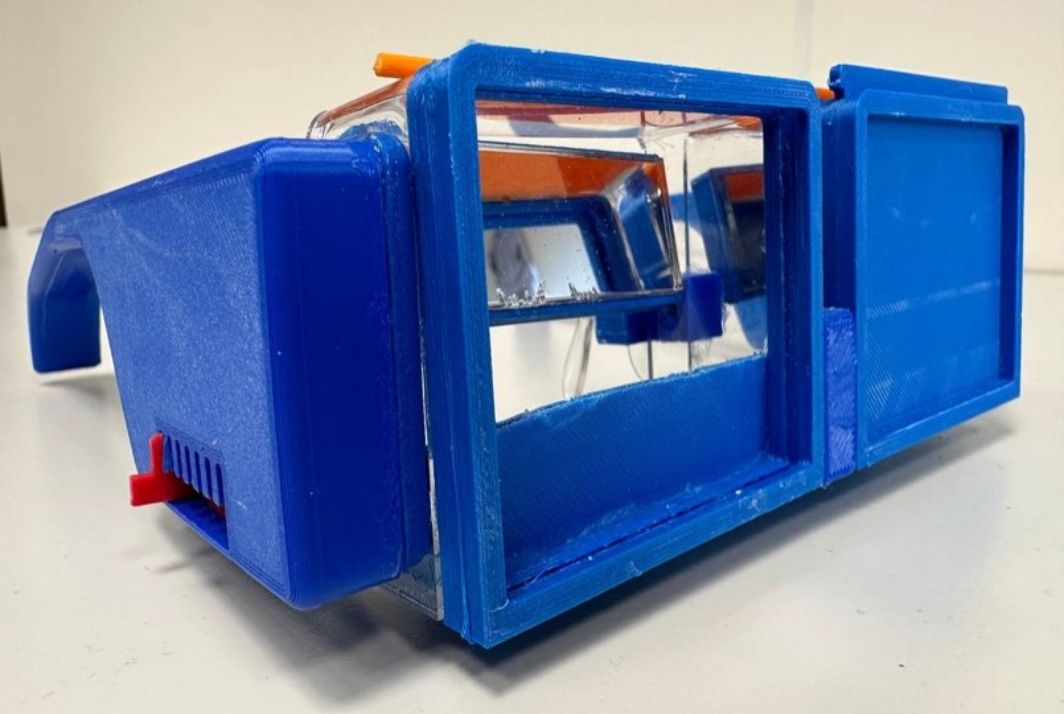
Name of product: Opticus
Purpose: To mitigate the effects of vertical nystagmus
Description: An assistive device that allows the user to see ahead while glancing down and lessen the pendulous movements of the pupils for more steady vision
Product Review by SSN peer client
“I was blown away by the prototype. I am now able to see far and clearly despite the constant movement of my pupils. What I liked best about the prototype was its ability to see far and clearly. It can also be tilted to see different angles or perspectives of what is in front of you
The only disadvantage is that it is currently bulky and heavy, more time is required to refine the prototype.
With more time for research, the prototype can have a larger view and a lighter weight. I plan to use the prototype in the future if it is further refined. Perhaps in lecture halls where the screen is not so close to me, this would be a huge benefit for me because it would eliminate the need for me to use my phone to capture what the slides on the screen are referring to,” added Shee Pin.
Group 5 Prototype: Footwear for Prosthetic Leg users
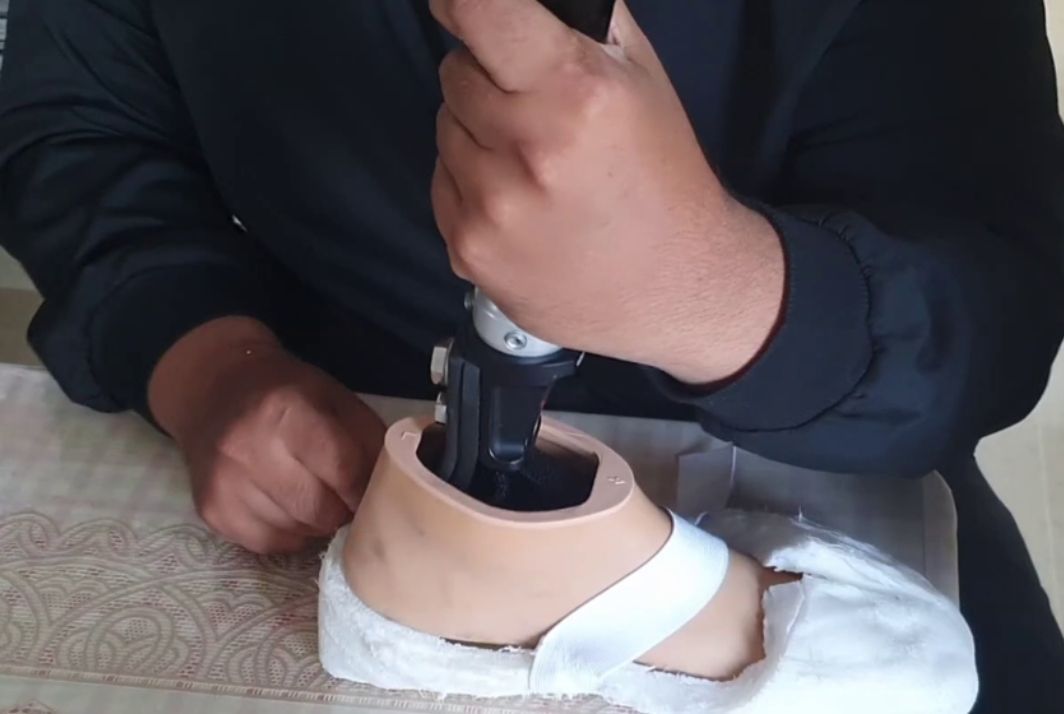
Name of product: Footwear for prosthetic leg users
Purpose: To create a minimal-hassle footwear attachment for prosthetic leg users in order to minimize time and effort wasted each time they need to use the bathroom
Description: To meet SSNs security needs, ease of wear needs, anti-slip needs and thickness needs
Group 6 Prototype: D.E.S.K!
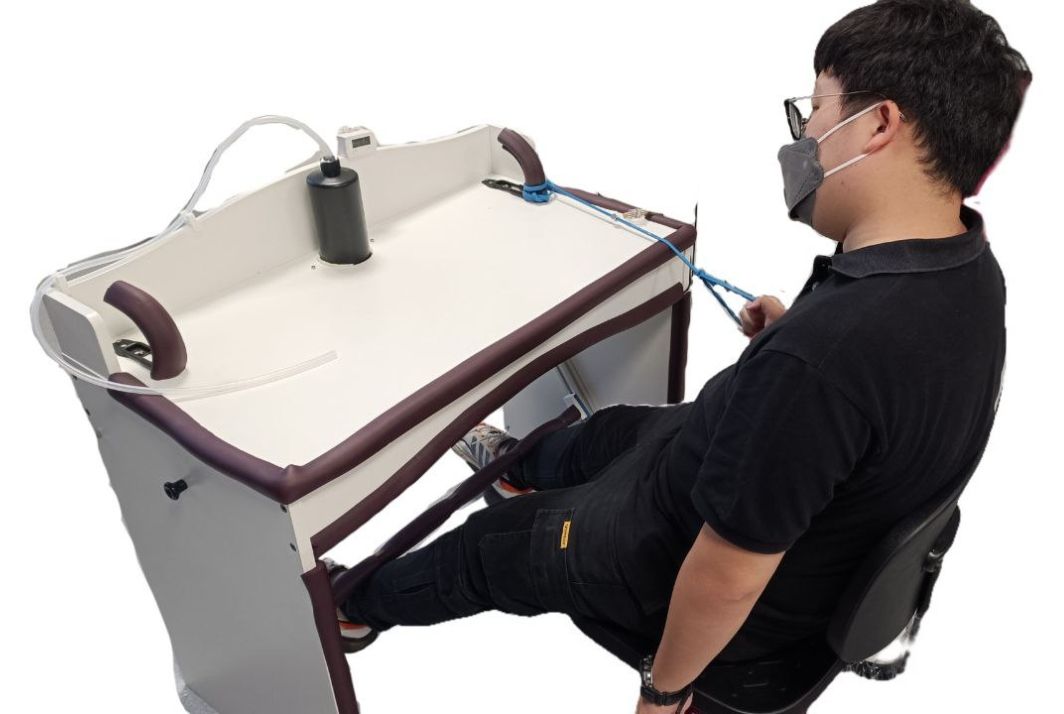
Name of product: D.E.S.K! aka Daily Exercise Study Kit
Purpose: To help youth and adults suffering from uncontrollable limb and body tremors and face difficulty doing physiotherapy exercises
Product Description: D.E.S.K! enables independent physiotherapy exercises in a home setting, especially while one is working or relaxing on the table.
Budding biomedical engineers put their skills to the test
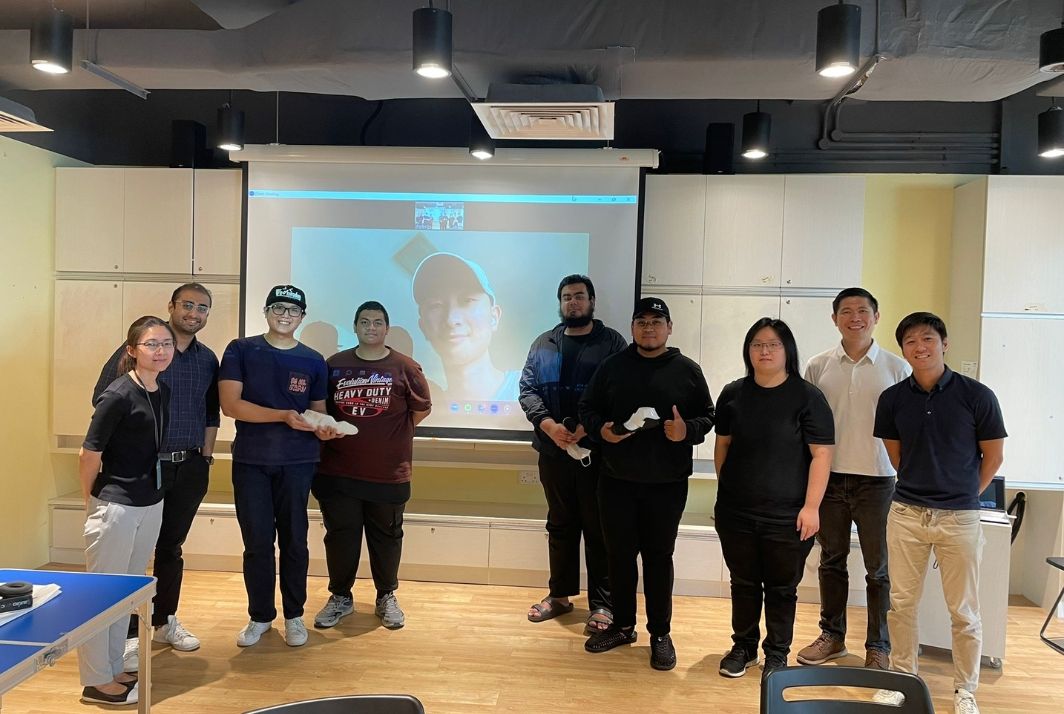
Muhammad Akmal Khan Bin Anuar Khan, a Year 3 undergraduate from the Department of Biomedical Engineering, and his team devised footwear for prosthetic leg users. He expressed that unlike typical modules, BN4103 presented a unique and meaningful opportunity to work with and understand the living realities of people with disabilities and forge real-world impact.
“Coming up with the problem statement to be solved with my group gave me the ability to truly understand the importance of what I am working on and who it is for. Through constant communication with our group’s peer client, we were able to create a prototype that truly benefitted his situation.”
He continued: “With the completion of this module, my skills as an engineer have been allowed to grow beyond what I expected.”
“Of course, the expected technical skills such as 3D printing were put in practice along with other technical skills. More importantly, we were able to practice new skills which were vital for our prototyping”
“With the $400 budget, we were able to practise creating resin moulds and get creative with how we would use it in our project. Being such an expensive resource, I was grateful that the budget given was adequate for practise and to create a final prototype. This will definitely be useful in my upcoming projects for future modules,” Akmal said.
Ong Jun Kiat, fellow third-year biomedical engineering undergraduate whose team devised the optical assistive device, Opticus, echoed similar sentiments. He said: “I was able to utilise the engineering knowledge and theory learnt in class alongside problem-solving and critical thinking skills to deal with challenges, difficulties or setbacks. My weekly interactions with Shee Pin have also shaped me holistically as a person, developing my empathy.”
“Some people tend to assume, normalise or understate problems that SSNs face in their daily lives. This creates a social barrier that prevents them from understanding SSNs further,” he said. “Therefore, this module serves a vital purpose to break this barrier and create awareness of the need for an inclusive society.”
Understanding the perspectives of People with Disabilities (PWD)
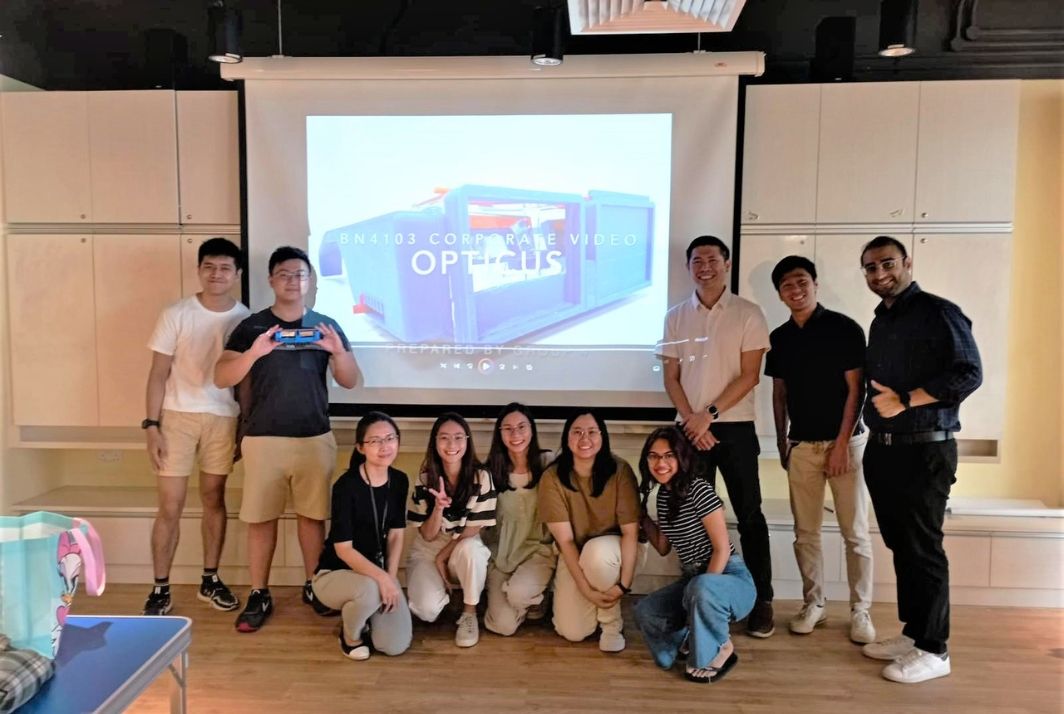
Students had the opportunity to hear from members of the PWD community and representatives from organisations that support PWD. Through these sharing sessions, students learned more about the challenges faced by PWD, how these organisations assist PWD and what the government has done to ensure PWD can live independently.
Said Jun Kiat: “You will get to feel what PWD encounter in their lives, which makes this module all the more rewarding, especially since you know that your invention will play a better part in improving their lives.”
“This was the most enjoyable aspect of this module. I appreciate the shift in pace from a quick and demanding academic-centred teaching to hearing personal experiences of those with different disabilities," he said.
Students iterated the importance of listening to and understanding the needs of their SSN peer clients. Said fourth year biomedical engineering undergraduate Shi Zheng: “We must understand our SSN and know what they want by constant communication instead of just assuming.”
A hands-on experience at the Enabling Village
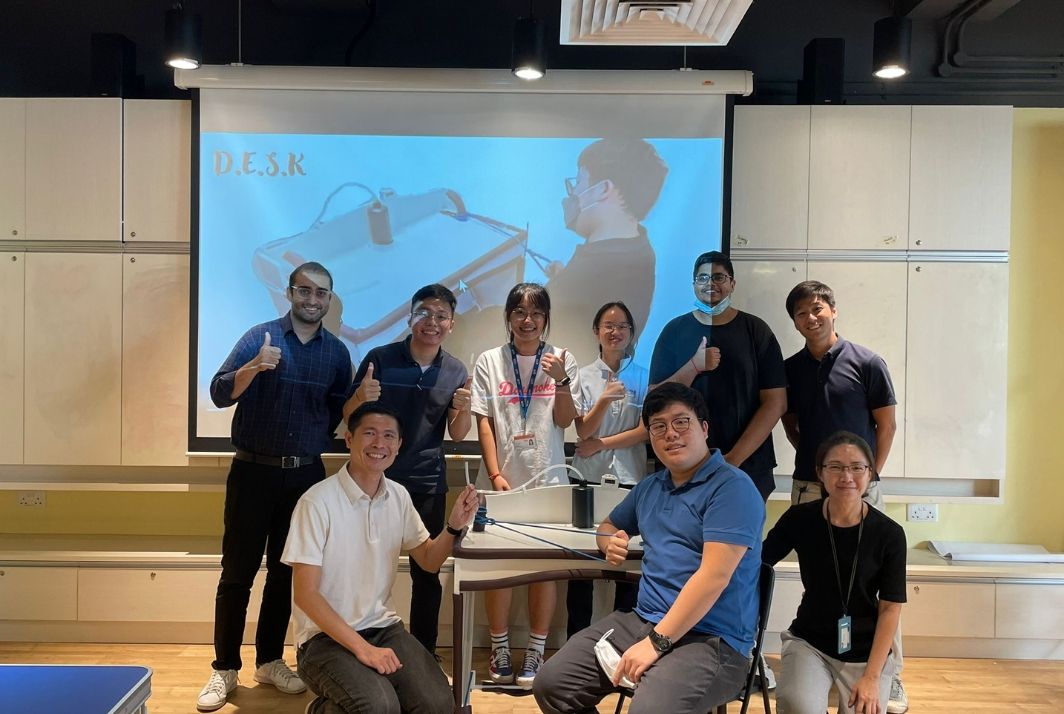
Students from BN4103 attended laboratory practical sessions at the TechAble centre in SGEnable Enabling Village where they worked on the fabrication of their design prototypes.
Jun Kiat said: “My team went through multiple design iterations and CAD modelling to ensure that our prototype was acceptable and comfortable for our SSN peer client, Shee Pin. While plenty of effort was spent on this project, it was all worthwhile at the end. Constructing and develop a fully functional prototype from scratch was probably one of our proudest moments.”
Laboratory staff from the TechAble centre played an instrumental support role during the fabrication process. Added Shi Zheng: “Their advice and assistance were extremely helpful in the course of our project and helped us to produce our prototype in a timely manner.”
Overcoming challenges faced in the process
While highly rewarding, the collaboration and development process was not always a smooth sailing one.
Akmal recounted challenges that his team faced in fabricating a footwear prototype for users with prosthetic legs. He said: “Our project was unique as no previous groups had attempted a similar project. We were at a loss when we realised we needed to procure a prosthetic leg of our own.”
“They do not come cheap and the various hospitals we contacted were reluctant to loan us one. This ate up almost 1 to 2 weeks of our project time until we decided to, as a stop gap, proceed with our prototyping using a mannequin leg instead. Finally, we did our research and decided to make a casted mould of our SSNs prosthetic leg, giving us the precise dimensions. It was a very time and resource consuming process but it felt rewarding when we achieved our goal," he added.
He alluded to the importance of being targeted in their efforts and not attempt to achieve multiple priorities at once.
Akmal continued: “We learned that we had to take a more measured approach in achieving our goals and to identify core needs that our footwear will meet. Dr Kah advised we seek feedback from our SSN on the possible areas that our prototype was lacking. This allowed us to clarify our doubts and work on what we could actually achieve.”
Students were prompted to assess if their proposed prototypes were practical and were able to assist the PWD to effectively overcome barriers in their daily functioning.
Jun Kiat said: “Dr James will always ask our team thought-provoking questions such as, "Is this feature essential for your prototype for the SSNs?" or "Are there any alternatives to this design?". These questions helped our team reframe our original solutions to ensure that our final design can achieve its intended outcome of improving the quality of life of the SSN.”
Final Module Takeaways
Shi Zheng and his Group 6 members summed their key takeaways from the experience:
“Our SSN peer client made a strong impression as despite his many speech disabilities, he still is able to be very patient with us during the questioning session.
We have learned that what people with disabilities want the most is not our pity but our respect. It means that they want to be treated as a normal person just like you and me.
Their disabilities may restrain them physically but not mentally. They are the same as us.”
Share:
Contributor
Shanice Poh, Year 3, NUS Business School
Photos:
BME for Good (bGood) - A Community Engagement Educational Initiative by the Department of Biomedical Engineering, NUS College of Design and Engineering


